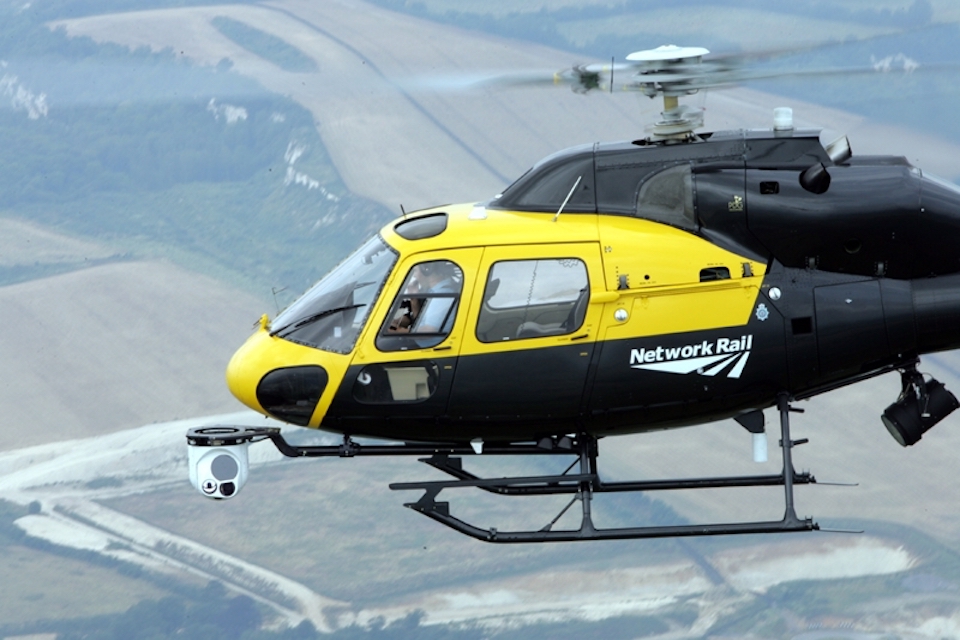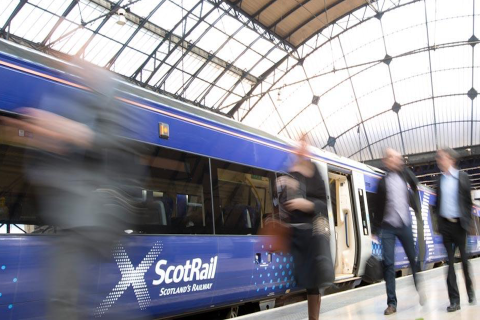Landslip Britain’s growing number of incidents

Rail users are being asked for patience, as the infrastructure agency Network Rail tackles a landslip. Then another, and another. The landslip-induced closure between Oakengates and Wellington stations (on the Wolverhampton – Shrewsbury line) is just the latest in a long litany of collapsing infrastructure on Britain’s ageing railway network.
The legacy of having the world’s first railway network is coming home to roost. In many places in Britain, the infrastructure management agency is fighting a rearguard action. They are battling to shore up the Victorian embankments and cuttings, which are themselves struggling to cope with present-day demands and conditions.
Necessary and immediate action for safety
Network Rail is currently engaged in major works to safely reopen the railway line between Oakengates and Wellington stations in Shropshire, northwest of Wolverhampton. The breach is on a cross-border line between England and Wales. Completion of the restoration work is anticipated by Easter weekend, around Friday 29 March. This comes after the line was closed on Friday 8 March due to a landslip on a steep railway embankment, necessitating immediate action for safety.
The landslip was triggered by persistent heavy rainfall over the winter months. More than 5,000 tonnes of material gave way beneath a 50-metre section of the railway. That is posing significant challenges for engineers. The ongoing efforts involve clearing the site to allow access to essential materials and equipment needed to stabilise the embankment.
Stone backfill and inevitable replacement buses
Engineers are working to stabilise the approximately 15-meter-high embankment. This entails digging out the slipped material to create a new slope profile. NR say this will incorporate large ‘steps’ to reduce the gradient. They will then backfill with over 12,000 tonnes of stone to fortify the embankment against future incidents.
While works progress, Network Rail is coordinating closely with partners at West Midlands Railway and Transport for Wales to mitigate disruptions to passenger services. Until Sunday 17 March, all trains commenced and terminated at Wolverhampton and Shrewsbury stations, with rail replacement buses serving intermediate stations. A limited service is in place again this week.
Paying for corners cut by historic developers
Landslip emergency callouts are a common occurrence. Now, they seem to be becoming more frequent. The reasons seem obvious. The age of Britain’s railways, now dating back almost 200 years, plays a part. The constant issue of a wetter climate is also often cited as a major factor. However, the critical matter is the difficulty in maintaining infrastructure which was built to historical standards that would not be considered by today’s design engineers.
Network Rail is concentrating resources in response to the growing problem. However, it is attempting to stabilise civil engineering that often owes less to Victorian ingenuity and more to Victorian parsimony. It is very much a case of “buy cheap, pay twice”. The only problem was that the railways were often bought cheaply in the nineteenth century. Rectification will have to be paid for at twenty-first-century prices.
Astonishing high-tech aids to monitoring
Network Rail does employ high-tech equipment to monitor the railway, in ways even the Victorians would find astonishing. Helicopter surveys are commonplace. Airborne equipment, with advanced imaging technology, aids in identifying high-risk areas prone to landslips. Motion sensors and CCTV monitor soil and rock movement around the clock, alerting engineers and enabling timely intervention.

Strengthening slopes through drainage improvements and the installation of steel rods or soil nails is also a key strategy in preventing future incidents. Additionally, flood warnings prompt preemptive deployments of personnel and equipment to vulnerable areas, enabling swift responses to potential threats. If you believe all this to be stupendously expensive – you would be correct.
Remiss in the recent past
However, the agency has been found remiss in its duties in the recent past. the tragic derailment at Carmont in Scotland was put down to improperly installed drainage infrastructure, which had been intended to mitigate against just such a landslip incident.
Meanwhile, at the Oakengates landslip, extensive cancellations and diversions are in place for at least this week and next. Several operators are affected, with a much-reduced service and replacement buses deployed. The litany of disruptive infrastructure failures is almost too long to recount. It may be too much to hope that, between now and the Oakengate reopening, another incident will not join the list.
Further reading:





Old assets increasingly stressed by a changing climate are difficult to manage. Part of the problem is knowing where an asset is failing before your drivers and passengers find out. We developed a system to monitor whole routes for ground movements (rather than just point sensors) which is working elsewhere in Europe. We’d love to bring it to the UK. ( look us up @ Sensonic.com )
High amplitude, dynamic and cyclic forces, as well, proactively (not just reactively…) has to be outed!
Broken rails, basic of railway…, shall not be single most frequent cause for derailments, etc.!
(A high quality steel, a now standard UIC60 rail section, safely withstands 90 kps axial load etc. but at current track standard, regrettably not half of that, etc., etc.)